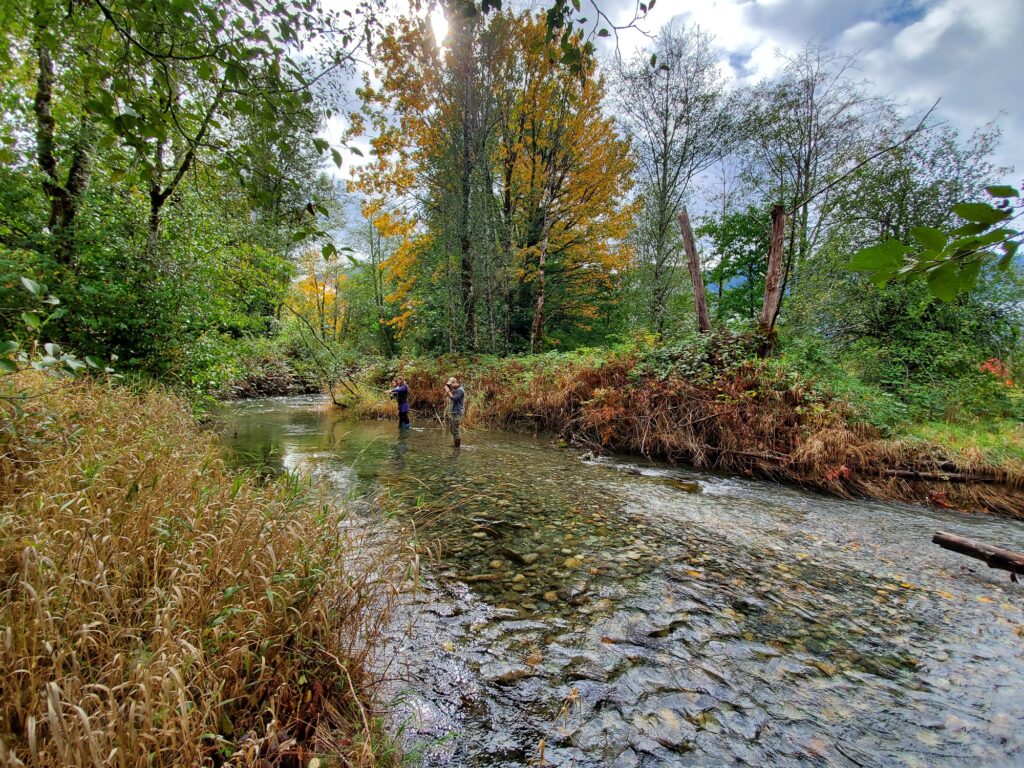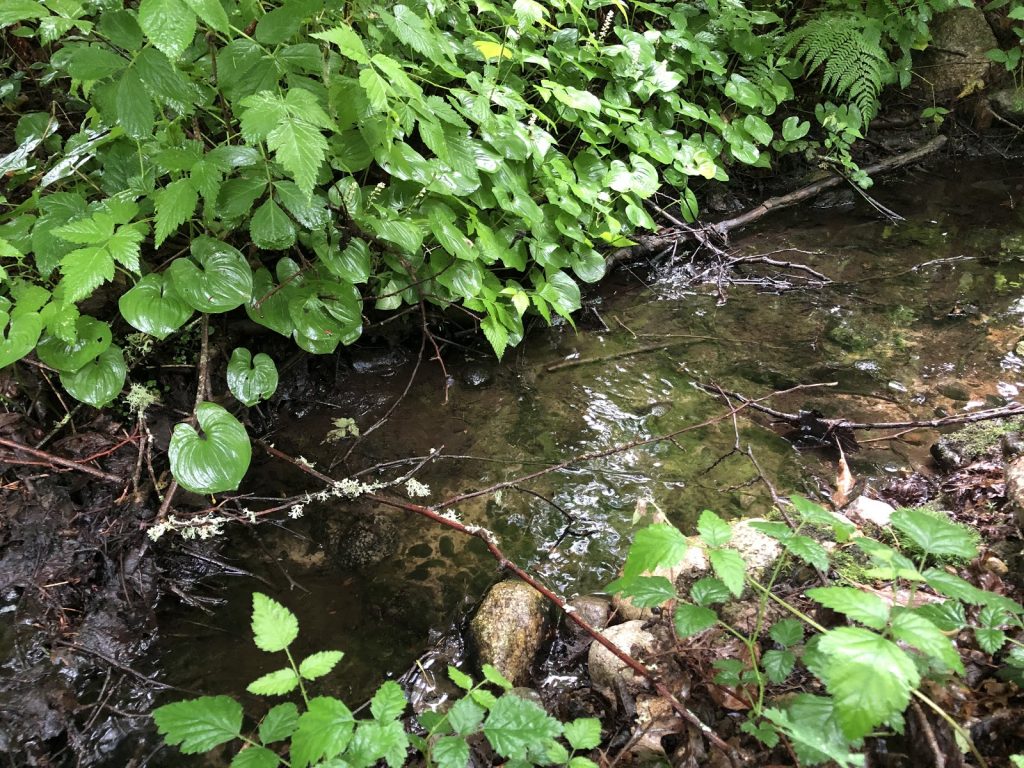Rivers, Creeks & Streams
The veins of our lands.
Our region’s streams and rivers used to be bordered by water-loving trees and thickets of native shrubs. This vegetation plays a crucial role in our ecosystems, but it’s vanished along many parts of our waterways as development continues to change the landscape.
We can help restore our land’s rugged beauty by replenishing river and stream banks with native plants, shrubs and trees. We call this work “riparian restoration.” Removing invasive species, like knotweed or blackberry bushes, also helps restore the natural function of our environment over time and provides benefits for all who depend upon our streams and rivers.
Riparian restoration projects are a large part of our job, and your District likely offers programs and services to help rural and urban landowners protect the health of creeks, streams, rivers and wetlands by enhancing and restoring nearby vegetation, or the “riparian buffer.” Your District may also offer financial incentives, as well as project design and implementation services to qualified property owners.

What is a riparian buffer?
Trees and shrubs along streams, rivers, and other waterways help provide shade and keep water cool enough for fish. These vegetated areas are called “riparian buffers.”
What’s so important about riparian restoration?
Fish habitat
As dying or uprooted trees fall into the stream, their trunks, root wads, and branches slow the flow of water. Large snags create fish habitat by forming pools and riffles in the stream. Riffles are shallow gravelly sections of the stream where water runs faster. Many of the aquatic insects that salmon eat live in riffles. Salmon also require riffles for spawning. They use pools for resting, rearing, and refuge from summer drought and winter cold.

Wildlife habitat
Over 80 percent of all wildlife species in western Washington use riparian areas during some part of their life cycle. Riparian vegetation provides food, nesting, and hiding places for these animals. Unfortunately, forested riparian areas account for the smallest percentage of forest land in Washington.
Bank stabilization and water quality protection
The roots of riparian trees and shrubs help hold streambanks in place, preventing erosion. Riparian vegetation also traps sediment and pollutants, helping keep the water clean.

Food chain support
Salmon and trout, during the freshwater stage of their life cycle, eat mainly aquatic insects. Aquatic insects spend most of their life in water. They feed on leaves and woody material such as logs, stumps and branches that fall into the water from streambanks. Standing riparian vegetation is habitat for other insects that sometimes drop into the water, providing another food source for fish.
Thermal cover
Riparian vegetation shields streams and rivers from summer and winter temperature extremes that may be very stressful, or even fatal, to fish and other aquatic life. The cover of leaves and branches brings welcome shade, ensuring that the stream temperature remains cool in the summer and moderate in the winter. Cooler, shaded streams have less algae and are able to hold more dissolved oxygen, which fish need to breathe.
Flood control
During high stream flows, riparian vegetation slows and dissipates floodwaters. This prevents erosion that damages fish spawning areas and aquatic insect habitats.
